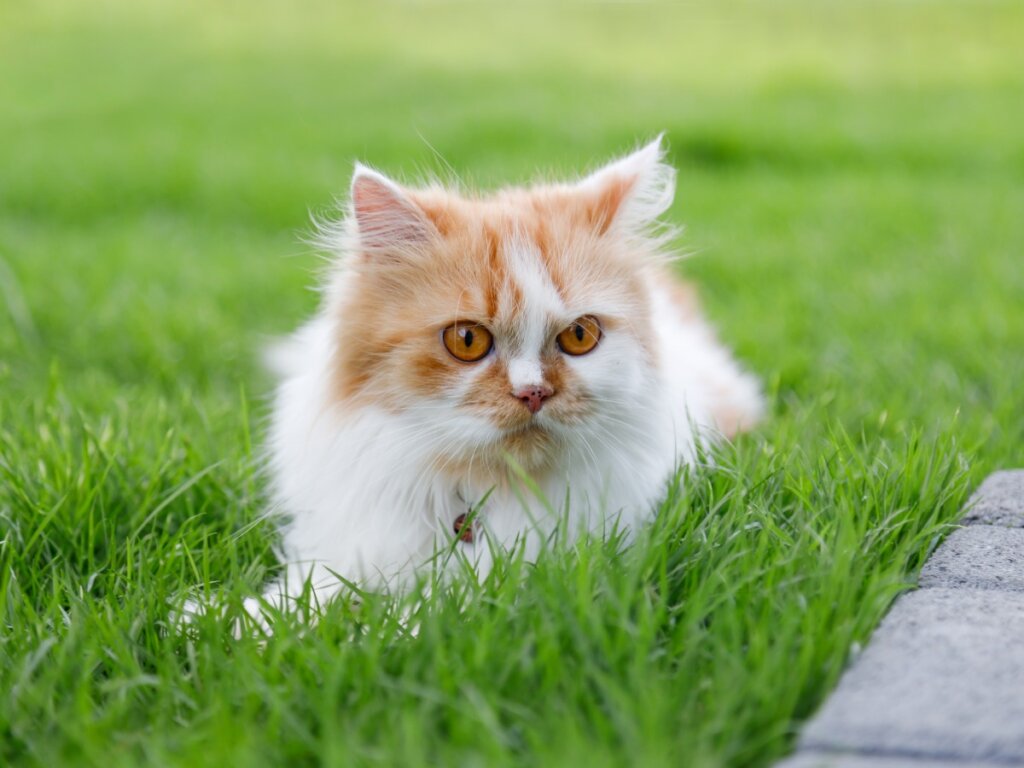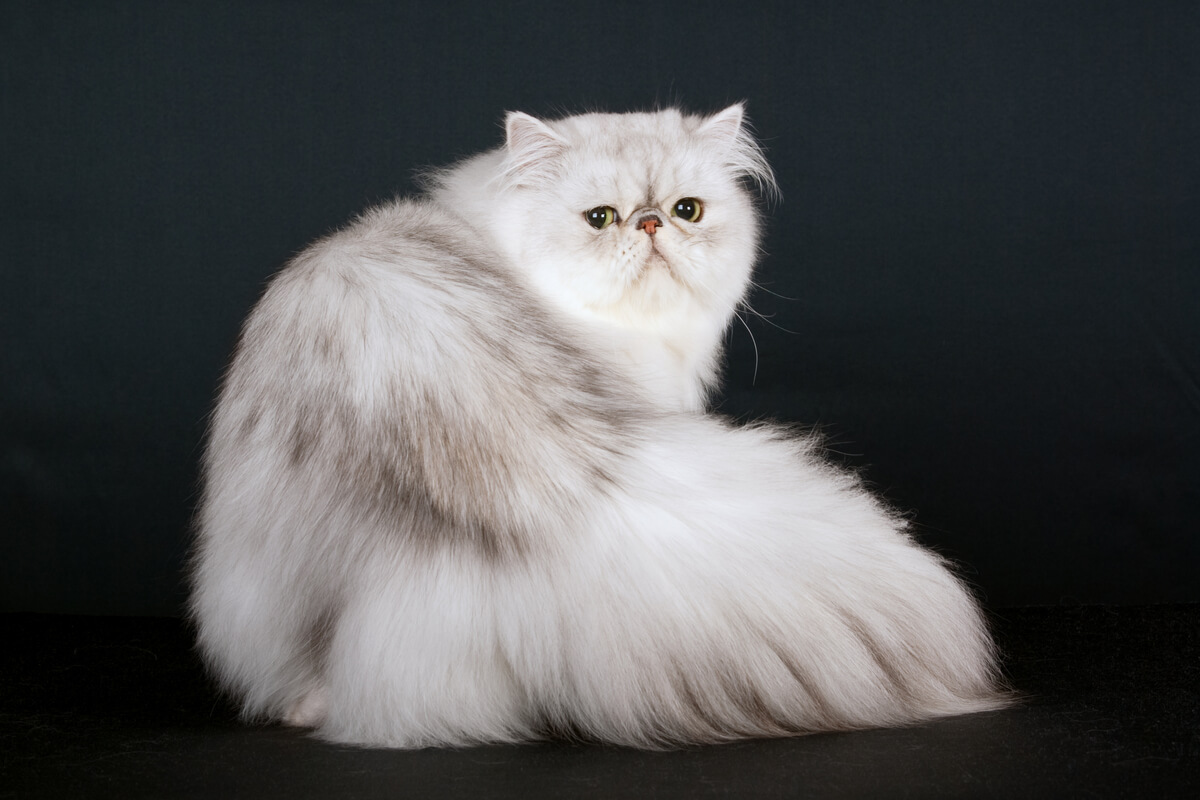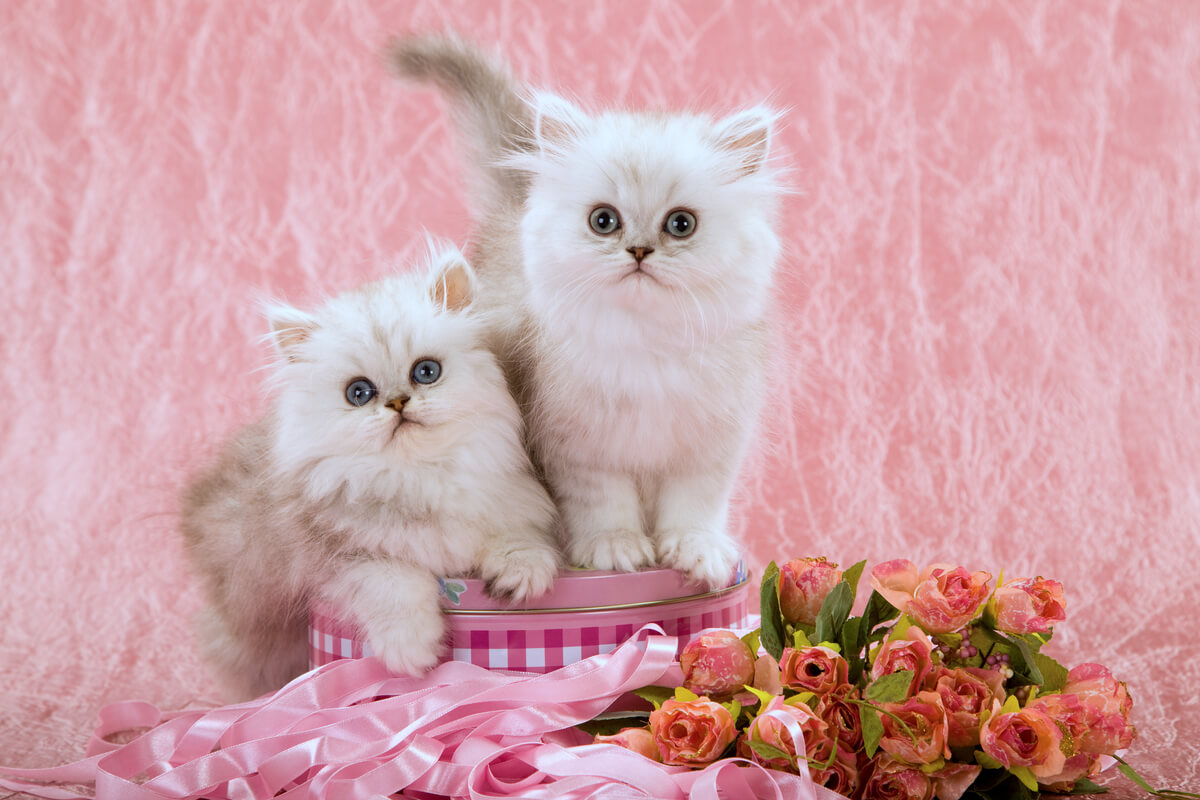Types of Persian Cats

Although their appearance isn’t to everyone’s taste and their health often isn’t too good, many people adore this cat breed. Did you know that there are several types of Persian cats and that they’re officially classified?
Indeed, these beautiful long-haired, flat-faced felines also have differences between them. Even so, it isn’t difficult to tell them apart, you only have to look at the shape of their head and body, as well as their color. In this space, we’ll help you in the process, so don’t stop reading.
Persian cats: characteristics
In general, you won’t need classes to recognize a Persian cat, whatever type it is. Their wide face, flat nose and big eyes (sometimes even bulging) are enough to identify them. Their coat is also long and silky.
As for their character, the different types of Persian cats tend to be quite demanding when it comes to their relationship with their owner. They’re very sociable and often seek attention, bordering on dependence. They don’t like to be left alone for long periods of time.
As we hinted at before, their health is quite delicate. They’re prone to kidney and heart disease, as well as eye, respiratory, and digestive problems, as well as blood disorders. That’s why they require regular and exhaustive check-ups at the veterinarian and special care, such as daily brushing.

How many types of Persian cats are there?
There are currently 7 types of Persian cats that differ in several characteristics, even though, at first glance, it may not seem so. Here you’ll be able to get to know them all.
1. Silver & golden
In this category, we include the golden and silver-colored Persians (or chinchilla). It isn’t easy to identify these colors, because the silver & golden types are the ones with less defined shades.
To recognize them, you should look at their limbs, face, and tail. At the end of each of them, you’ll find a darker coat, as if it were that of a chinchilla (hence its name). Their eyes, in addition, are usually green or greenish-blue.
2. Tabby
In this Persian, you’ll find patterns in the coat, such as brindle or mackerel. The colors, on the other hand, vary between silver, blue, chocolate, red, cream, cream cameo, and cameo. Their eyes, unlike the previous ones, are usually hazel or green.
This variety of Persian is attributed with a greater sociability than the rest.
3. Smoke & shaded
This name comes from the interesting color effect it has on its coat. Although at rest it may appear to have a solid color, when moving one can see a kind of “smoke”, or “shades” of different colors: black, blue, cream, red, smoky tortoiseshell, smoky blue, and smoky cream, depending on the specimen.
4. Himalaya
This is probably one of the most easily recognized types of Persian cats. It’s characterized by having the same color pattern as a Siamese cat : white or beige all over the body, except for the face, ears, tail, and limbs. At these points, the fur darkens to shades of red, blue, gray, lilac, and chocolate.
The eyes, like the Siamese, are light and intense blue.
5. Solid color
These Persians have a flat, uniform color throughout their coat. There are usually no patterns or patches of different shades, as well as no shaded or lighter areas. You’ll find white, black, chocolate, cream, lilac, blue, or red colors.
Their eyes are always copper-colored. However, for white Persian cats, there’s an exception, as they can have blue shades or heterochromia.
6. Bicolor
As the name suggests, these Persians have 2 main colors, except for the white torso and slightly darker limbs. The most common combinations include black, blue, red, lilac, chocolate and cream shades.
Their eyes are always copper-colored.
7. Particolor
Of all the recognized Persian cat types, the particolor is the only one that allows patches of different shades. Because of this, different combinations can be found, such as calico, tortoiseshell, smoke, chocolate shell, tortoiseshell, cream blue and cream lilac.
The particolor shouldn’t be confused with the tabby, as the latter has patterns in the coat, while the former refers to patches of different colors. The eyes, on the other hand, are always copper-colored.
Considerations before adopting

In closing, it’s good to give a final reminder about the special needs these cats have. While they all need an adopter, remember that choosing them for their looks often leads to health problems due to artificial selection.
So, never forget their daily brushings, vet visits, and the attention and affection they demand. These aristocrats of the feline world are delicate, so make sure you can give them a good life before including them in your family.
All cited sources were thoroughly reviewed by our team to ensure their quality, reliability, currency, and validity. The bibliography of this article was considered reliable and of academic or scientific accuracy.
- CFA. (2017-2018). About the Persian. 2019, de The Cat Fanciers’ Association Sitio web: http://cfa.org/Breeds/BreedsKthruR/Persian.aspx
- Alarcón Alarcón, V., & Hidalgo Terán, K. A. (2016). Frecuencia de presentación de la enfermedad poliquística renal en gatos persas y sus cruces mediante el método diagnóstico de ultrasonografía en clínicas veterinarias y pacientes ambulatorios en Quito y sus valles (Bachelor’s thesis, Quito: Universidad de las Américas, 2016).
- Gatti, R. M. Enfermedades del gato Persa.
- Stebbins, K. E. (1989). Polycystic disease of the kidney and liver in an adult Persian cat. Journal of Comparative Pathology, 100(3), 327-330.